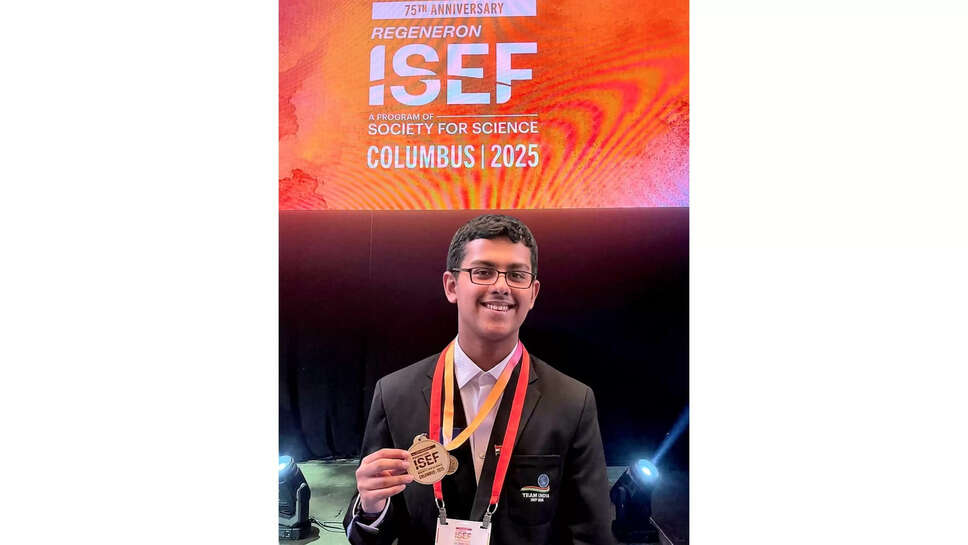Teenage Genius Builds ‘Paraspeak’ to Help Paralyzed Patients Speak

In a world where medical technology continues to evolve at a breakneck pace, one of the most inspiring innovations has come not from a research lab or a tech giant, but from the curious and compassionate mind of a teenager. A 17-year-old Indian student has developed Paraspeak—an AI-powered communication system designed to help individuals suffering from paralysis or severe speech impairments regain their voice.
This breakthrough invention has not only stunned the scientific community but also brought hope to thousands of patients who find themselves trapped in silence, unable to communicate even their most basic needs.
The Spark Behind Paraspeak
The idea for Paraspeak was born out of empathy. The teen, whose name is quickly becoming synonymous with socially driven innovation, was deeply moved after visiting a rehabilitation center where he encountered patients who were cognitively sound but physically incapacitated due to conditions like ALS (Amyotrophic Lateral Sclerosis), stroke-related paralysis, and traumatic brain injuries.
Many of these patients were unable to speak, move their limbs, or even write, leaving them isolated and dependent on caregivers to interpret their eye movements or facial twitches.
Driven by a desire to change that, the student began working on a system that could translate facial micro-expressions, eye movements, and limited gestures into speech—essentially creating a digital voice for the voiceless.
How Paraspeak Works
At the core of Paraspeak is a combination of facial recognition software, machine learning algorithms, and a custom-built AI model trained on a wide range of human expressions and intent-based cues. The device uses a small camera, either mounted on a headband or integrated into a wheelchair, to track subtle movements in the face, eyes, and jaw.
The captured data is processed in real time by an AI model which interprets these movements and translates them into spoken words or sentences via a speech synthesizer. Over time, the system also adapts to the unique expressions of each individual user, becoming more accurate and intuitive.
For instance, a slight eye movement to the left might be associated with “I’m hungry,” while a brief blink could mean “yes.” Users can customize the command library based on their most frequent needs, making the system highly personalized and efficient.
Low-Cost, High Impact
What makes Paraspeak even more remarkable is its affordability. Unlike existing commercial devices, which can cost upwards of ₹3–5 lakhs (approx. $4,000–6,000), Paraspeak has been designed to function with components that cost less than ₹10,000 (around $120).
This makes it accessible to a much larger population, particularly in developing countries where such assistive technologies are often out of reach for the average patient. The teen inventor partnered with local NGOs and hospitals during the testing phase, ensuring the device could work effectively in resource-limited environments.
The software behind Paraspeak is open-source, allowing others to improve and expand it, thereby increasing its potential to evolve and adapt to more use cases, including different languages and cultural contexts.
Recognition and Support
The impact of Paraspeak has not gone unnoticed. The project has received national and international accolades, with tech conferences and innovation challenges featuring the invention prominently. The teen has been invited to speak at youth tech forums, won awards in social innovation categories, and attracted interest from health tech incubators.
Major universities and research institutions have offered mentorship and support to scale the technology, while philanthropists and venture capitalists are exploring ways to bring Paraspeak to market on a larger scale.
But despite the attention, the teen remains focused on the mission rather than the limelight. “My goal is not to build a company,” he said in an interview, “but to give people back their voice, their ability to communicate and live with dignity.”
Changing Lives, One Voice at a Time
Paraspeak has already transformed the lives of its early users. A 45-year-old stroke survivor in Bengaluru who had been unable to speak for three years used Paraspeak to communicate with his family for the first time without assistance. His first words—"Thank you"—were enough to move caregivers to tears.
Similarly, a young girl in Jaipur with cerebral palsy now uses the device to attend school virtually, answering questions through the AI interface and participating in class discussions in ways she never could before.
In each of these cases, Paraspeak did more than facilitate communication—it restored a sense of identity and independence. For patients who were previously considered “locked-in,” the ability to express thoughts, feelings, and choices has proven to be profoundly empowering.
The Bigger Picture: Inclusive Technology
Paraspeak is more than just a tool; it’s a step toward inclusive design—a philosophy that insists technology must serve everyone, especially those historically left out of the conversation. This project highlights the potential of AI to bridge neurological and physical barriers, redefining what assistive technology can do.
While many startups chase profit through high-end wearables or luxury smart devices, Paraspeak proves that simplicity, empathy, and ingenuity can have a far greater human impact.
The project also underscores the importance of youth innovation. In an era where teenagers are often stereotyped as passive consumers of content and technology, this invention is a powerful reminder of what young minds can achieve when they are driven by purpose and empathy.
Looking Ahead
The teen developer now plans to enhance Paraspeak by integrating natural language processing, enabling more complex and conversational outputs. Plans are also underway to create a mobile version that can sync with smartphones via Bluetooth, further reducing costs and improving portability.
In addition, the next version of Paraspeak will likely include multilingual capabilities, allowing users to communicate in Hindi, Tamil, Bengali, and other regional languages. This is particularly important in India, where language diversity can be a barrier in clinical and caregiving settings.
Government partnerships may soon be on the horizon, with talks reportedly ongoing with the Ministry of Health and various disability welfare boards to deploy Paraspeak in public hospitals and rehabilitation centers.
A Voice for a Silent World
Paraspeak is not just a testament to technological innovation; it's a symbol of compassion turned into action. It bridges a fundamental human gap—the ability to speak, to express, to be heard.
For thousands of patients rendered silent by paralysis, trauma, or degenerative diseases, Paraspeak is more than a gadget—it’s a second chance. And it came not from a lab or a multinational firm, but from the desk of a teenager who refused to accept that silence should be permanent.
In a world increasingly obsessed with speed and spectacle, this quiet act of invention reminds us what technology is truly meant for: to serve, to heal, and to connect.
